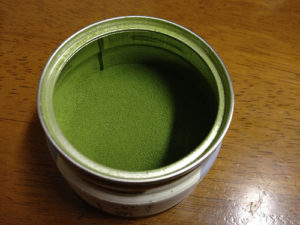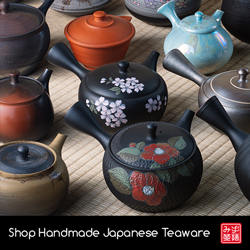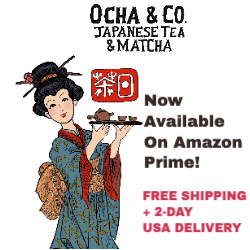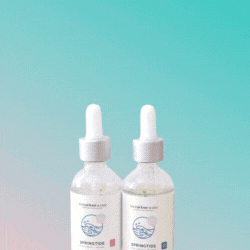
I often get asked what’s the healthiest green tea, and the short answer I usually give is that it’s matcha.
But in this post I’ll explain in detail why this is so.
What makes a green tea healthy? The most important compound would be the catechin known as EGCG.
EGCG makes up about half of the total catechin content. Many of the clinical studies actually use EGCG instead of green tea itself.
EGCG in green tea
All teas come from the tea plant, Camellia sinensis, so one would think that all green teas should be somewhat similar in terms of how healthy they are. But this isn’t so.
The main reason is freshness. A green tea that isn’t fresh will be oxidized, and that results in a lower catechin content.
This study found that EGCG levels progressively decrease with storage time. And it turns out that many of the cheap green tea bags are far from fresh, hence they might not be healthy at all.
I guess one can tell from the aroma of the leaves. If the aroma is very faint or non existent, the tea could be past its prime.
But in general, loose leaf sencha will have about the same content of EGCG as matcha. Even a bancha will be almost equally as healthy in that regard. Refer to this post for the exact data.
The difference is the actual EGCG dose once the tea is prepared.
A bowl of matcha can have three times the amount of EGCG than a cup of sencha.
Is it a coincidence that sencha leaves can be infused at least three times in total? If you ate the sencha leaves, the EGCG dose would be the same as in matcha.
Although there’s not an exact number, in many studies that I’ve seen it looks like 3 cups (cups of any size as long as they were prepared with a teaspoon of green tea, 3 to 4 grams) a day would be the minimum dose in order to obtain the health benefits of green tea.
In other words, you can brew a green tea for all the infusions it can give, or just drink one bowl of matcha.
So the real reason why matcha is so healthy is because it is a powder. You consume the whole tea leaves.
A culinary grade matcha is equally as healthy as a ceremonial grade matcha. Not only that, a green tea powder of reasonable quality can be equally as healthy too.
What matters in terms of quality of green tea? It’s not the catechins, it’s the amino acid content. That’s the difference between a ceremonial grade matcha and a green tea powder. It’s also the difference between bancha and gyokuro.
As you can see, how healthy a tea is has nothing to do with high quality, or how expensive it can be.
Catechins are bitter and astringent. A tea that is very high in EGCG might not taste so good.
By the way, what’s the difference between matcha and a regular green tea powder? Matcha is made of tencha, a tea that has a shading process so that its amino acid content increases.
Many tea vendors will market matcha as a very special tea because it is so healthy. But the only reason that it’s healthy is because it’s a tea powder of reasonable quality.
Any good green tea can be healthy for you if you drink it regularly.
I wish that more people would choose a tea based on taste and aroma, instead of how healthy it’s marketed as.






July 20, 2019
I have read in some places that “organic” matcha is the only one to drink, and other places say that most of the best quality matchas are actually not organic. I’ve heard 3 reasons why the best matchas may not be organic:
1. Japan is small, and many tea fields in the best regions are close together, so it is very hard for some tea farmers to avoid contamination from a neighbor who is not organic.
2. In Japan, matcha growers and drinkers don’t care about the organic label as much as Western drinkers do, so they don’t have the incentive to do it.
3. The best matcha is grown in small batches so that the conditions can be controlled. It’s too expensive to pay for organic testing and certification on a small farm that won’t sell a ton of matcha.
What do you think, have you come across this in your research?
July 20, 2019
Hi Paul, thanks for your comment.
That’s a personal choice. Some people won’t drink a wine unless it’s organic, and are willing to pay more for that label.
I guess it’s a complicated debate,probably worth investigating outside this blog.
My personal opinion is that Japanese tea in general, is very safe. When it’s exported, the controls are even more strict.
I value taste and aroma over how healthy a tea is. Health is at the bottom of the list for me, just like for example a whisky lover.
So for me a matcha that I like is good, no matter if it’s organic or not. And as you mention, most matchas aren’t organic.
July 20, 2019
Thank you for your perspective, it’s very helpful!
Another question: if I understand correctly, EGCG and caffeine are bitter, while l-theanine is sweet. These three elements are the main reasons that people like the effects of drinking Japanese green tea, and matcha in particular.
So if I pay $2.00/g instead of $0.10/g for a matcha that’s sweeter and less bitter, it’s very possible that I’m losing caffeine and EGCG while gaining l-theanine in the expensive matcha?
The reason I ask is because I do enjoy the taste of a good matcha, but I am starting to see some very positive effects from it, such as reduced headaches and better sleep. For people that enjoy matcha partly for a particular effect, for them it may or may not be worth paying more depending on how the effect they want changes the taste and price, so it would be important to understand this. For example, if someone doesn’t care too much about the l-theanine content but likes caffeine doesn’t mind the bitter flavor, a cheap matcha might actually be a better choice for them than an expensive matcha?
July 20, 2019
Hi Paul
Better matcha is made with leaves from better harvest. They tend to have more caffeine.
But because of price, it’s probably better for someone that wants only caffeine and EGCG to buy the culinary grade matcha anyway because you can always just add more. In other words, if you don’t mind the flavor and aroma, only EGCG and caffeine, it’s better if you buy a cheaper one.
Amino acid content is the main factor for high quality Japanese teas, not EGCG.
July 20, 2019
The amino acid content is the l-theanine? Or are there other amino acids in green tea that are also important besides l-theanine?
July 20, 2019
Mainly it would be l-theanine, but there’s also glutamic acid, arginine, aspartic acid, among others.
June 19, 2023
What is your opinion of Shincha? I love the taste, but I read since it is “fresh” is doesnt have catechins, including EGCG (on the other hand, it is high in amino acids)… So in terms of health it is probably inferior to matcha and sencha, correct?
June 21, 2023
Hi Kira
I don’t have the data comparing shincha and sencha, but being very fresh also means that the catechins are intact. Because they do degrade with time.
Note that shincha is a type of sencha. It should be somewhat similar. If you grind it into a powder, I expect it to be almost the same catechin content as a high quality matcha.